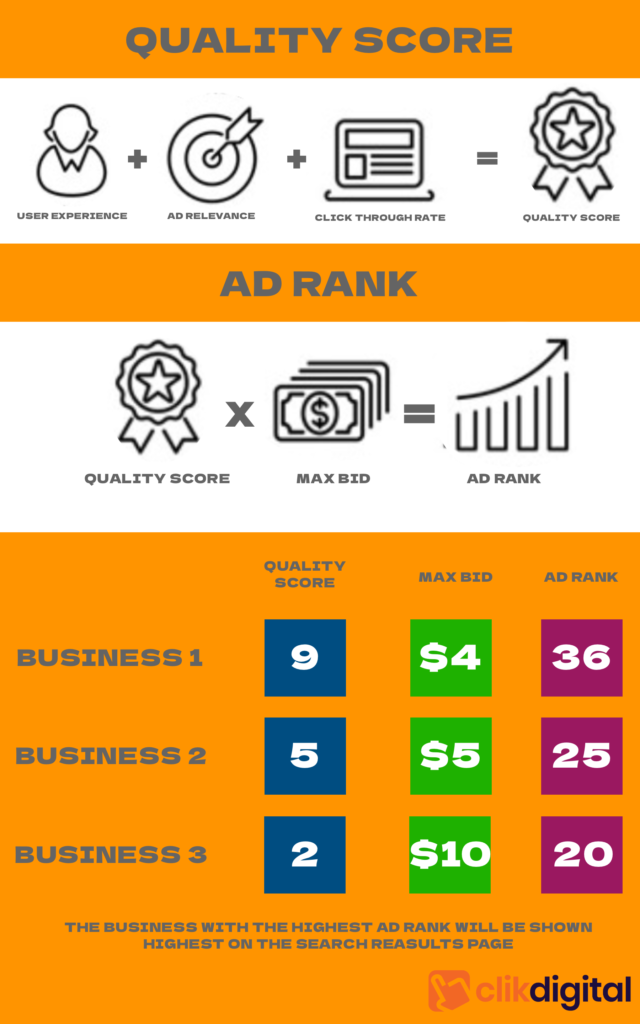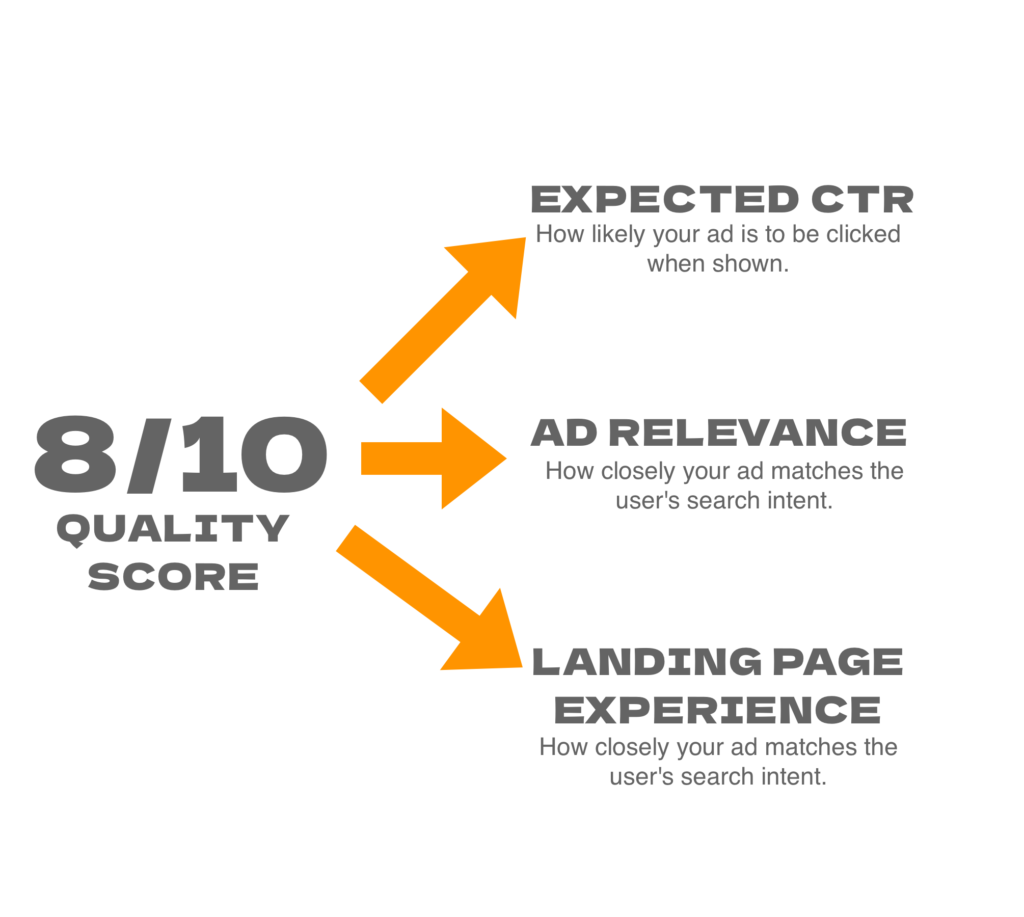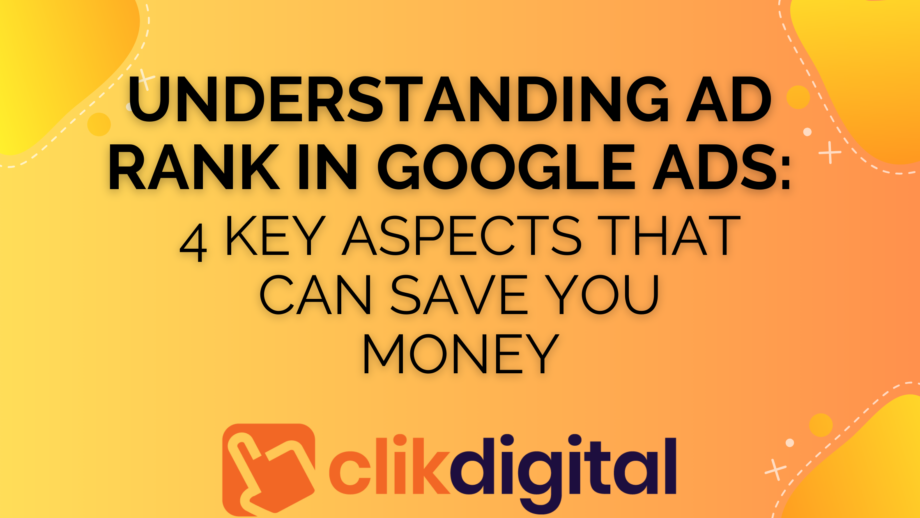Digital advertising is always evolving. One thing stays the same though: Google Ads remains the most popular online platform for businesses to reach their target. To make the most out of your ads and rank high on the search page, it’s vital to understand the concept of Ad Rank in Google Ads.
So, What is Ad Rank?

Think of Ad Rank as Google’s way of scoring your ad. It helps Google decide where and how often your ad should show up when people search for relevant content. The higher your Ad Rank, the better your ad’s position in search results.
It’s very much a popularity contest. Ran by Google.
To get a good Ad Rank, you need to strike a balance between a few things:
- A reasonable bid
- A quality ad
- A good match with what people are searching for
When these things work together, your Ad Rank goes up, and you get more out of your advertising budget.
In this blog post, we’ll look at 4 key factors that will help you understand Ad Rank in Google Ads,
Ad Rank is one of those crucial metrics that directly impacts where your ads appear and how often they are displayed. In this blog post, I’ve split up Ad Rank into four key aspects that will provide you an understanding of Ad Rank, as well as some actionable strategies that you can use to keep your budget in check.
4 Aspects of Ad Rank
1. Auction Time Ad Quality Score:

By far the most important, and actionable factor when it comes to ad rank is your quality score, so it requires some extra attention.
Quality Score is a measure of how well your ad, keywords, and landing page work together to provide a positive experience for users. Here’s what having better quality scores will do for your ads:
- Higher Ad Position: When your Quality Score is high, your ad is considered more relevant and valuable to users. Google rewards this by placing your ad in a more prominent position on the search results page.
- Lower Costs: Quality Score directly influences the cost of advertising. When your ad has a high Quality Score, Google charges you less for each click. This means that you can maintain or even improve your ad’s position while paying a lower cost per click, saving you money in the long run.
- Improved Click-Through Rate (CTR): High-Quality Scores are usually associated with ads that are more appealing to users. When your ad is relevant and engaging, it’s more likely to be clicked. A higher CTR further boosts your Quality Score and Ad Rank, creating a positive cycle of increased ad visibility and lower costs.
Learn everything you need to know about quality scores here
2. Bid Amount
Your bid amount is the maximum you’re willing to pay for a click on your ad. It’s a fundamental component of Ad Rank and influences your ad’s position in search results. When you have a higher Ad Rank due to a competitive bid, your ads can secure better positions without necessarily increasing your budget.
So yes this means spending more money will help your ad rank. But be careful, there can be consequences for bidding too high as well. Use historical data & educated estimates to find a realistic budget for you. Ad auctions often prefer advertisers with high Quality Scores. Your ad may be placed above competitors with lower Quality Scores, even if they bid more than you.
This article explains this nicely.
3. Competitiveness of an Auction:
When your ads are of higher quality and relevance, they can outperform others without requiring you to increase your bids significantly. Remember, this is a popularity contest so your ads need to look good to Google before they even stand a chance of performing well.
In highly competitive spaces, relevance is vital. So choose keywords closely related to your ad & landing page content. This ensures that your ads will show to users genuinely interested in your products or services. Keyword research tools will help you pinpoint the most relevant keywords, allowing you to create highly tailored ad campaigns. This relevance can boost your Quality Score, which (again) is critical for maintaining a good Ad Rank.
4. The Context of the Search Term:
Ad Rank also takes into account the context of the search term, including the user’s location, device, time of search, and the nature of the search query. To achieve a high Ad Rank and effectively manage your ad budget, it’s important to consider and understand the context of the search term used by potential customers.
- User’s Location: Ad Rank considers the geographic location of the user who is conducting the search. This means that if someone is searching for a product or service in a specific location, Google will prioritise ads that are relevant to that location.
- Device: The device used for the search also matters. Ad Rank takes into account whether the search is performed on a desktop computer, a tablet, or a mobile phone. Some ads may be more suitable for mobile users, while others may work better on desktops. Optimising your ad campaigns for different devices can help you reach your target audience effectively.
- Time of Search: The time when a search is conducted can greatly influence Ad Rank. If you’re running a restaurant and someone searches for “dinner reservations” at 6 PM, it’s a prime opportunity to display your ads. Timing is crucial, and you can schedule your ads to appear at specific times when your potential customers are most active.
- Nature of the Search Query: Understanding the intent behind the search query is vital. People use search engines for various purposes. Some may be looking for information, while others are ready to make a purchase. Advertisers should tailor their ad copy and keywords to match the intent behind the search. For example, if someone searches for “best running shoes,” they are likely in the research phase, so an informative ad may be more
Unleash the Power of Ad Rank
In the constantly changing world of digital advertising, Ad Rank is your secret weapon for Google Ads success. By grasping the four essential elements discussed in this blog – Quality Score, bid amount, competitiveness, and contextual relevance – you can master Ad Rank and take control of your advertising budget. Your ads will not only shine in prominent positions but also attract clicks at a lower cost. In the world of online advertising, knowledge is power, and understanding Ad Rank can make all the difference. So, harness its potential, and watch your Google Ads campaigns reach new heights while saving you money.
Are you looking to boost your Ad Rank but don’t know where to start? We can help.
